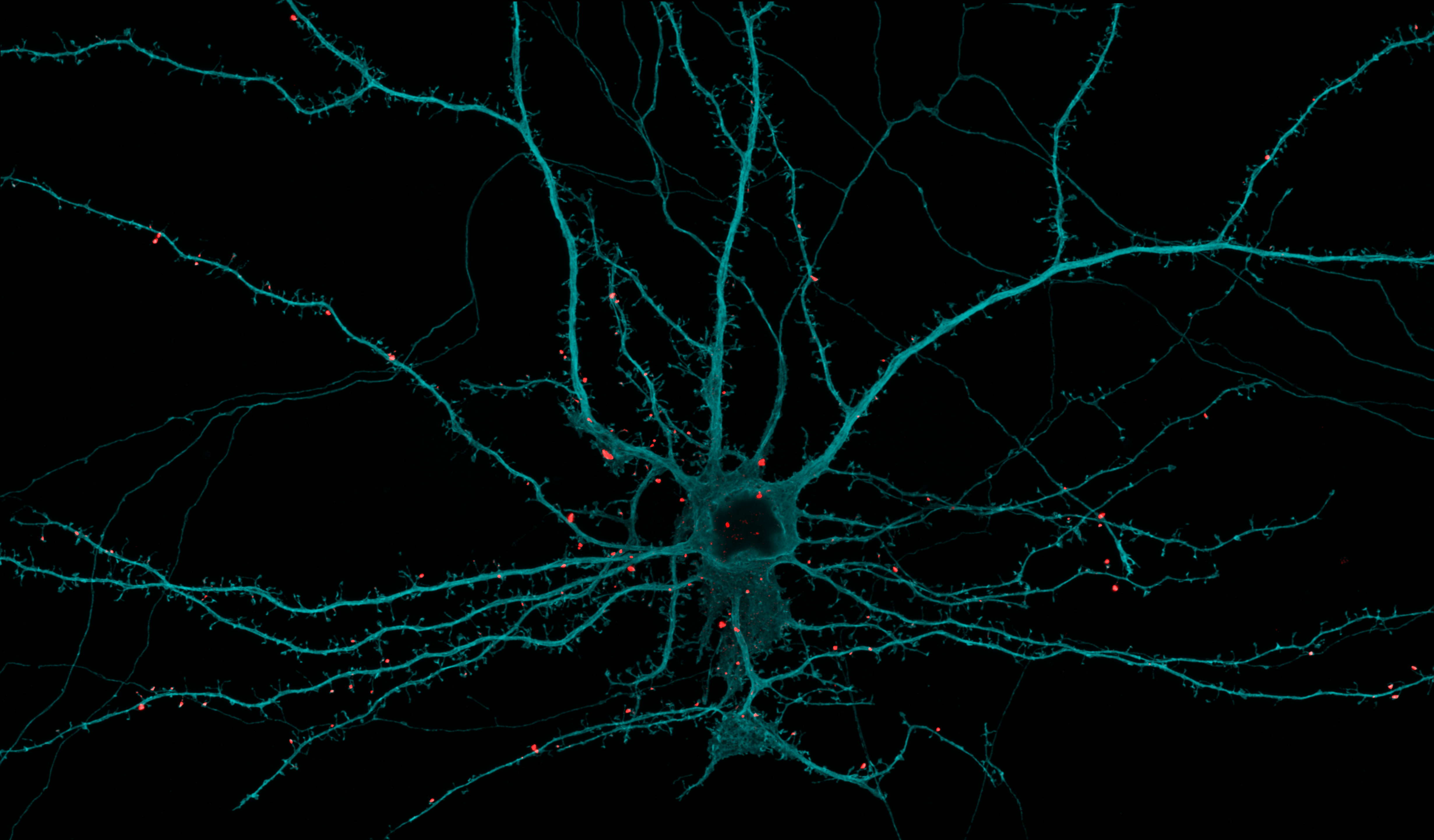
Researchers identify molecular brake that regulates synaptic maturation
Researchers at VIB-KU Leuven shed light on an unusual signaling pathway that orchestrates synaptic structure and function during brain development.
Leuven, 20 May 2025 - Researchers from the lab led by Prof. Joris de Wit (VIB-KU Leuven) have discovered an important clue to how connections between brain cells, known as synapses, mature. These new findings, published in Developmental Cell, demonstrated how two different proteins, GPR158 and PLCXD2, interact to form a specific component in developing synapses – the spine apparatus.
Synapses – the communication points between neurons – are not only molecularly diverse but also contain specialized organelles, tiny internal cellular machines, that finetune their function. The spine apparatus is one such organelle, and it is essential for stabilizing mature synapses and supporting learning and memory. Yet, how neurons control where and when this organelle forms have remained open questions.
Now, the research team has identified a novel synaptic protein complex that regulates the incorporation of the spine apparatus in developing synapses. Their study reveals that a protein called GPR158 interacts with an atypical enzyme, PLCXD2, to control spine apparatus abundance and the maturation of dendritic spines – the tiny protrusions on neurons that receive synaptic input.
“There is strong evidence that the spine apparatus helps amplify communication between neurons by acting as a calcium reservoir, a function that is crucial for the proper maturation of dendritic spines,” says Ben Verpoort, first author of the study.

Lifting the brake on synaptic development: The interaction between GPR158 and PLCXD2
Using a combination of molecular biology and advanced imaging techniques, the team identified PLCXD2, a protein with no known function in the brain, as a negative regulator of spine apparatus formation. PLCXD2 alters the local lipid environment within dendritic spines, disrupting key sites necessary for spine apparatus assembly.
Further experiments revealed that GPR158 operates by directly binding to and inhibiting PLCXD2. This interaction neutralizes PLCXD2’s suppressive effect, lifting the brake on spine apparatus formation, allowing it to assemble properly.
In neurons lacking GPR158, unchecked PLCXD2 activity led to a marked reduction in spine apparatus abundance accompanied by a shift toward immature synaptic structures. These immature dendritic spines fail to fully sustain synaptic communication, a finding supported by experiments showing reduced levels of essential neurotransmitter receptors – proteins critical for relaying signals between neurons.
Remarkably, removing PLCXD2 in these same neurons restored spine apparatus abundance and normalized dendritic spine maturation, directly linking the maturation defect to the unopposed activity of PLCXD2.
“We see underdeveloped synapses that likely communicate less effectively, which could have severe consequences for learning and memory formation,” explains Ben Verpoort.
Relevance to brain disorders
Understanding how the spine apparatus forms and functions is especially important because it has been implicated in brain disorders like Alzheimer’s and autism, where calcium imbalance and impaired synaptic signaling are key features. This newly identified GPR158–PLCXD2 axis offers insight into how synaptic structure and receptor content are regulated during brain development, and what might go wrong in disease.
“Understanding how this molecular brake works gives us a new handle on synaptic development and plasticity,” says Prof. Joris de Wit. “It opens exciting avenues for studying how synapses stabilize - or fail to - in disorders of brain connectivity.”
Publication
Verpoort, et al. “A postsynaptic GPR158-PLCXD2 complex controls spine apparatus abundance and dendritic spine maturation” Developmental Cell, 2025.
Funding
The research team at the VIB-KU Leuven Center for Brain & Disease Research was financially supported by the Foundation Flanders (FWO), Queen Elisabeth Medical Foundation for Neurosciences, Stichting Alzheimer Onderzoek-Foundation Recherche Alzheimer (SAO-FRA), KU Leuven, and VIB.
About the VIB-KU Leuven Center for Brain & Disease Research
Scientists at the VIB-KU Leuven Center for Brain & Disease study how brain cells are organized and how they communicate with each other. These mechanisms reveal and provide insights into what goes wrong in brain diseases such as Alzheimer's, Parkinson's, ALS, and dystonia. This basic work should ultimately lead to new drugs for use against these currently incurable diseases.


